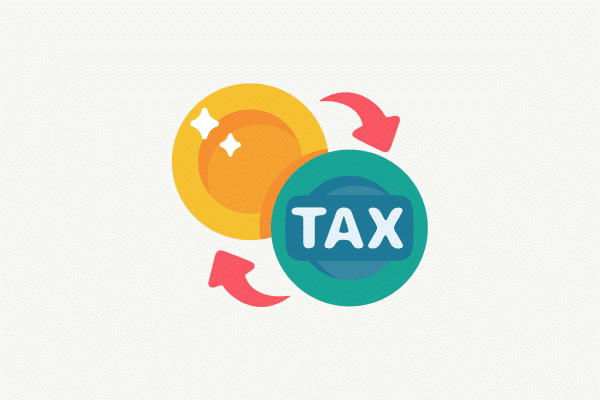
Let’s be real. Nobody likes paying taxes (except maybe the IRS). If you’re a business owner, you know every deduction counts. But take too many deductions without the right documentation, and suddenly, you’re on the IRS’s radar.
So how do you lower your tax bill legally while keeping the IRS happy? Simple: Know the rules, keep clean records, and work with a CPA who understands how to maximize your deductions without setting off alarm bells.
At Insogna CPA, a leading CPA firm in Austin, Texas, we help business owners legally reduce their tax burden, optimize deductions, and stay compliant. Let’s break it down so you can save big without stress.
Why the IRS Flags Certain Business Deductions
The IRS doesn’t hate deductions but they do scrutinize expenses that look excessive, unusual, or undocumented.
IRS Red Flags to Watch For:
- Claiming big deductions while showing little or no income.
- Writing off luxury meals, travel, or entertainment that don’t fit your industry.
- Perfectly round numbers on expenses (like exactly $5,000 for office supplies).
- Mixing personal and business expenses in one account.
The takeaway? Deductions are fine as long as they’re ordinary, necessary, and well-documented.
How to Maximize Business Tax Deductions (Without Stressing Over an Audit)
1. Keep Business & Personal Finances Separate
The fastest way to make the IRS suspicious? Mixing business and personal expenses. If you’re paying for gas, groceries, and business supplies from the same account, you’re making tax season way harder than it needs to be.
How to Stay Compliant:
✔ Open a business bank account and credit card—keep everything separate.
✔ Pay yourself a salary or owner’s draw instead of pulling money from your business account.
✔ Save detailed receipts and invoices for every transaction.
Pro Tip: If you’re ever audited, the IRS will want clear separation between personal and business expenses. A small business CPA in Austin can help you clean up your books before tax season.
2. Only Deduct Expenses That Are “Ordinary and Necessary”
The IRS allows deductions that are “ordinary and necessary”—meaning common for your industry and essential to running your business.
What Might Get Scrutinized?
- Writing off a luxury retreat in Bora Bora as a “business conference.”
- Deducting 100% of your vehicle expenses without proof of business use.
- Claiming an excessively large home office deduction.
How to Stay Compliant:
- Document the business purpose for every expense.
- Keep detailed receipts and add notes (e.g., “Client meeting at XYZ Restaurant”).
- Only deduct the business portion of expenses (e.g., car, home office, phone).
Pro Tip: If an expense is partly personal and partly business, only write off the business portion (e.g., 50% of your cell phone bill if you use it for both work and personal).
3. Maximize “Safe” Business Deductions
Some deductions are golden. They’re 100% legal, rarely questioned, and can save you thousands.
Deductions You Should Absolutely Take:
✔ Home Office Deduction – If you have a dedicated workspace, a portion of your rent, mortgage, utilities, and insurance is deductible.
✔ Business Mileage – Keep a log of all business-related driving to deduct mileage.
✔ Marketing & Advertising – Websites, ads, branding, and promo materials are fully deductible.
✔ Retirement Contributions – Contributions to a Solo 401(k) or SEP IRA can slash your taxable income while growing your wealth.
✔ Health Insurance Premiums – If you’re self-employed, your health insurance costs are deductible.
Pro Tip: The IRS rarely questions properly documented expenses—work with an Austin accounting firm to ensure your deductions are bulletproof.
4. Document EVERYTHING (Receipts Are Your Best Friend)
If the IRS ever comes knocking, you’ll need proof that your deductions were legit. No receipts? No deductions.
How to Keep Audit-Proof Records:
✔ Use QuickBooks, Xero, or another accounting software to track expenses automatically.
✔ Save all receipts and invoices—digital copies are fine.
✔ Keep a separate folder for big deductions like meals, travel, home office, and equipment purchases.
Pro Tip: The IRS can audit tax returns up to 3 years old (and longer if they suspect fraud). Keep records for at least 3–7 years just in case.
How Insogna CPA Helps You Maximize Deductions & Stay Audit-Proof
At Insogna CPA, a top CPA firm in Austin Texas, we help business owners:
✔ Find every deduction they qualify for—without raising red flags.
✔ Ensure bookkeeping and tax filings are accurate and audit-proof.
✔ Develop proactive tax strategies to keep more money in their business.
Whether you need help with recordkeeping, tax planning, or IRS compliance, we’ve got you covered...
Final Thoughts: Smart Tax Planning = More Money in Your Pocket
Maximizing tax deductions isn’t about cutting corners—it’s about being strategic, organized, and proactive. The key? Keep clean records, follow IRS guidelines, and work with a CPA who knows how to help you save.
Free Tax Deduction Review. Let’s Save You Money!
Want to make sure you’re taking every deduction you deserve without IRS risk? Schedule a free consultation with Insogna CPA, your expert Austin small business accountant, and let’s build a tax strategy that works for you.





